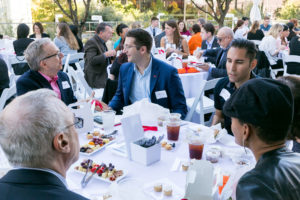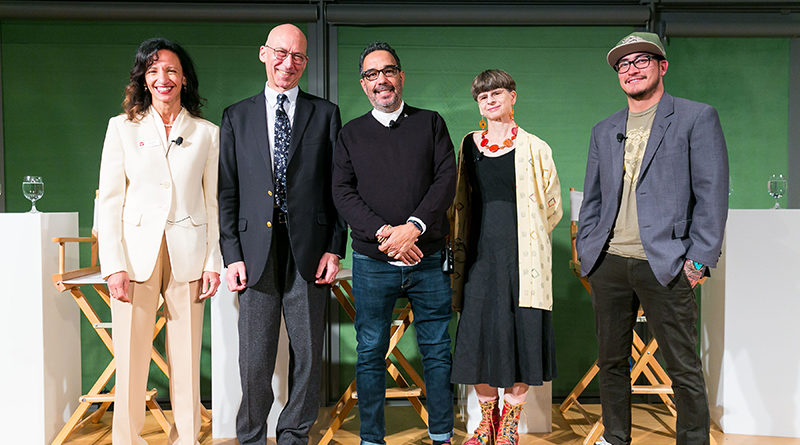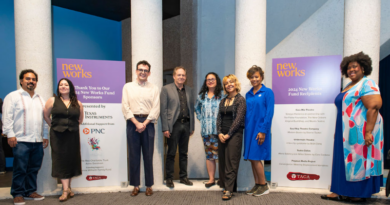National Panelists Say Museums Should Reach Out More
With years of serving communities through the support of art, meeting with people face-to-face has become an important principle of The Arts Community Alliance (TACA).
(ABOVE: Zannie Voss, Ken Tabachnick, Jon Hinojosa, Elizabeth Merritt, and Carlos Contreras. Courtesy photo)
“This is a really exciting time to be a part of the arts in Dallas,” said Zannie Voss, director of SMU DataArts. “We continue to develop bonds with the community – and it’s an ambitious and caring community.”
Voss served as moderator this fall for a panel discussion during the TACA Perforum at the Nasher Sculpture Center. The annual forum focuses on important topics in the art community. This year’s theme centered on meeting specific needs of residents.
Panelists were Carlos Contreras, director of marketing and innovation for Albuquerque, and a published author; Jon Hinojosa, artistic and executive director for SAY Si in San Antonio; Elizabeth Merritt, vice president of strategic foresight for the American Alliance of Museums and founding director for the Center for the Future of Museums in Arlington, Virginia; and Ken Tabachnick, executive director of Merce Cunningham Trust in New York.
They discussed understanding the attitudes, behaviors, and needs of those in communities – art related, or not.

There are “declining [art] audiences” across the country, Voss said.
“For more than half of the arts and cultural sectors across the country, that’s the trend,” Voss said. “Looking at data, 57 percent of people that have an arts and culture experience for the first time don’t go back – not to that specific experience, but to anything. So we need to ask, how can we better serve the needs of everyone?”
Hinojosa saw the need for art in the San Antonio school system “almost immediately.” With such a focus on state testing, a focus on the arts has declined, he said.
“Our public schools are overwhelmed,” he said. “What happens is the creative youth don’t have a community or a place of belonging in the public schools. There’s such a focus on academics and state testing, which is very important, but the arts kind of get pushed aside.”
However, his youth program, SAY Si, has flourished as a creative center for artistic students in San Antonio.
Merritt spoke on the state of museums across the country, including ways she works specifically with museum interactions with their communities.
“Museums are like belly buttons – innies and outies,” she said. “You’ll have people who are very passionate about certain things that they want to share with the world. Those are the museum ‘innies.’ The ‘outies’ are the ones who look at problems in communities and think, ‘Let’s address these problems with museums.’”









